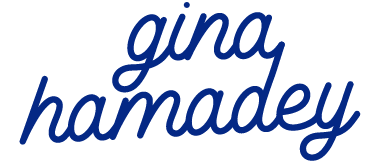How to Write a Letter of Gratitude
In what I call my Thank You Year I wrote 365 thank you notes (which are just gratitude letters that sound less intimidating!). Along the way I learned that while each gratitude letter is an original—because every recipient is an original!—there are some basic rules that will ensure your letter makes an impact, and turns into a meaningful keepsake that truly shows your appreciation.
STEP 1: Focus on the recipient.
Spend a few moments thinking about the note recipient—what they did for you; what they said; what it meant. You can jot down notes if you’d like. Because I was writing so many of these, I decided not to spend the time drafting outlines (as that was a time-consuming extra step that might act as a deterrent). But I did make sure to clear out distractions—no podcasts or Netflix shows in the background; no kids to tend to. I spent just a few minutes (less than five!) really thinking about this person and what I wanted to thank them for. To quote one of my former coworkers, Susan Chumsky, “the most important part of writing is thinking.”
STEP 2: Be specific.
Once you’ve thought about what you’d like to say, write it down. As with any writing, evocative details will make the gratitude letter come to life. That could be the exact words you remember this person saying, and where you were when they said them. It could be the favor this person did for you, or the ways in which they championed you. It can be short! Just a few sentences should do it. That's why I generally write in cards instead of on stationery (and call these "thank you notes" instead of "gratitude letters")—because it forces me to be succinct, and keeps the task less intimidating. And you can absolutely write your gratitude letter into an email if you prefer that to snail mail. Don’t let perfection be the enemy of the good here.
STEP 3: Add how it made you feel—then and now.
The recipient might know the event or favor you’re referring to, but they most likely don’t know how it made you feel (thankful, probably, but also, perhaps, joyful? Safe? Relieved?). When you write down specifics—not only what you remember, but how you felt—you are offering something new. It’s your unique perspective on a shared experience. And sharing that POV makes for a more interesting, meaningful letter.
STEP 4: End with gratitude, and a compliment.
What does this favor or event say about the person? Is it indicative of their generosity or kindness? Say that explicitly, perhaps toward the bottom of the letter, and end with a final “thank you.”
A GRATITUDE LETTER DOESN’T HAVE TO BE:
Comprehensive. Let go of the pressure to painstakingly describe everything this person means to you. Most of the 365 thank you notes I sent in my Thank You Year were four sentences or fewer. You’d be surprised how meaningful three sentences can be. (In fact, that’s why I prefer writing on cards to writing on stationery—you’re forced to be succinct!)
Timely. It’s never too late to say thank you. Gratitude letters are different from traditional confirmation-of-receipt thank you notes in that THERE IS NO STATUTE OF LIMITATIONS. Go ahead and thank a teacher for lessons she imparted decades ago, or a friend for frozen meals she dropped off when your seven-year-old was born.
Poetic. Focusing on how your words sound is literary preening. Don’t worry about crafting each sentence just so. You’re trying to get to the meaning behind the words, and the best writing is invisible.
Gorgeous. Letterpress cards are so nice, right? And so is thick, creamy stationery. But the look of the card or paper itself is beside the point. There’s nothing wrong with splurging on something beautiful, but it’s not important. Ditto handwriting. No one is expecting calligraphy. Just keep it legible.
A GRATITUDE LETTER SHOULD BE:
Specific. See above! Always opt for specific details over clichés.
Heartfelt. It takes a little bravery, but writing sincerely and from the heart turns a polite and well-meaning note into a memento.
GRATITUDE LETTER SAMPLE
I organized my Thank You Year into months, which I themed with topics such as “friends,” “family,” and “healthcare workers.” This one comes from my “career mentors” month.
Dear Nick,
I’ve been looking back on all stages of my career and thinking of people who made an impact. You are very high up on the list.
1- I loved working alongside you at RR, and felt like your talent and work ethic and creative ideas lifted me up.
2- You gave me priceless insight into F&W that helped me land that job.
3- The conversation we had when I was laid off from F&W was the first time I felt like, OK, I can do this.
4- You convinced me to write the cookbook that made my parents/everyone in my hometown proud.
5- You continue to have my back and offer great advice, referrals, etc.
In short, you’re the best, and I’m grateful to you and miss you.
Love, G
